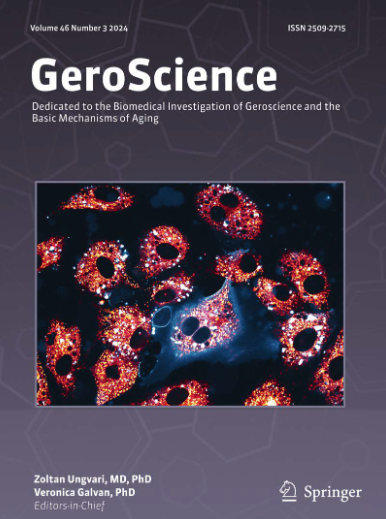基于实验室的衰弱指数在老年创伤患者髋部骨折风险预测中的发展。
IF 5.3
2区 医学
Q1 GERIATRICS & GERONTOLOGY
引用次数: 0
摘要
本研究旨在建立一个基于实验室的衰弱指数(FI-Lab)来预测老年髋部骨折(HF)后12个月的死亡风险。回顾性分析了235例70岁以上连续接受心衰手术的患者。FI-Lab基于21项血常规参数,采用受试者工作特征、曲线下面积(AUC)、Kaplan-Meier曲线和Cox比例风险比进行评估。FI-Lab显示6个月的AUC为0.7177,1年的AUC为0.7423。高FI-Lab值与较高的术前ASA评分、较长的手术时间、更多的围手术期输血和较高的术后并发症发生率相关。Cox风险比显示,1年和6个月的死亡风险从0.4分及更高的水平显著增加。这些发现突出了FI-Lab作为预测工具的临床相关性和有效性,强调了区分围手术期风险分层的必要性。本文章由计算机程序翻译,如有差异,请以英文原文为准。
Development of a laboratory-based frailty index for risk prediction in elderly trauma patients with hip fractures.
This study aimed to develop a laboratory-based frailty index (FI-Lab) to predict 12-month mortality risk in elderly patients following a hip fracture (HF). A retrospective analysis of 235 consecutive patients over 70 years old, who underwent HF surgery, was conducted. The FI-Lab, based on 21 routine blood parameters, was evaluated using Receiver Operating Characteristics, Area Under the Curve (AUC), Kaplan-Meier curves, and Cox proportional Hazard ratios. The FI-Lab showed an AUC of 0.7177 for 6-month and 0.7423 for 1-year survival. High FI-Lab values correlated with higher preoperative ASA scores, longer time-to-surgery times, more perioperative transfusions, and higher postoperative complication rates. The Cox hazard ratio revealed a significant increase in the risk of death for 1 year and 6 months from a score of 0.4 and higher. These findings highlight the FI-Lab's clinical relevance and validity as a predictive tool, emphasizing the need for differentiated perioperative risk stratification.
求助全文
通过发布文献求助,成功后即可免费获取论文全文。
去求助
来源期刊

GeroScience
Medicine-Complementary and Alternative Medicine
CiteScore
10.50
自引率
5.40%
发文量
182
期刊介绍:
GeroScience is a bi-monthly, international, peer-reviewed journal that publishes articles related to research in the biology of aging and research on biomedical applications that impact aging. The scope of articles to be considered include evolutionary biology, biophysics, genetics, genomics, proteomics, molecular biology, cell biology, biochemistry, endocrinology, immunology, physiology, pharmacology, neuroscience, and psychology.
 求助内容:
求助内容: 应助结果提醒方式:
应助结果提醒方式:


